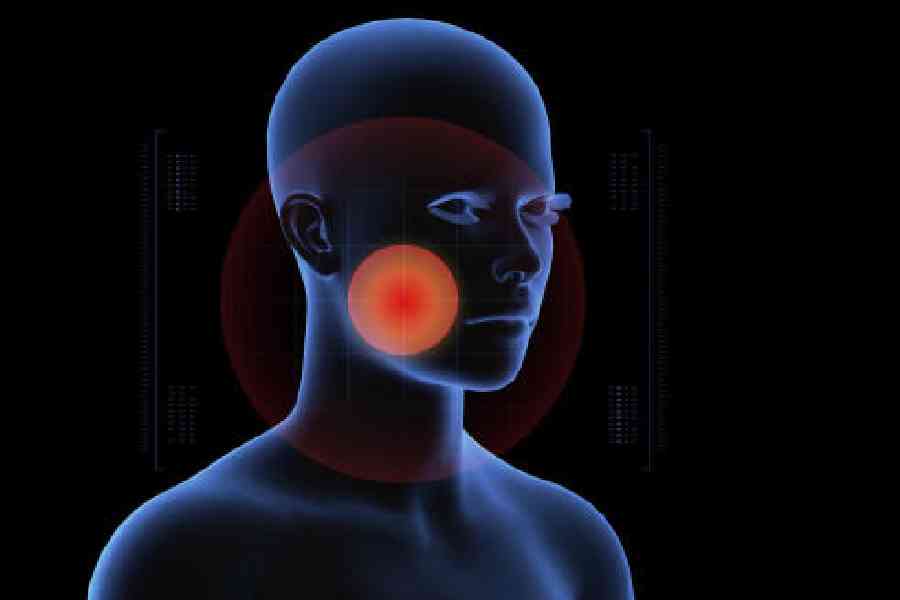Genomics scientist Arindam Maitra has probed single cells from the tumour tissues of 12 cancer patients, hoping to extract clues to address a question that confronts every cancer patient: “How long do I have?”
Some of the 12 patients had precancerous lesions in their mouths. The others had oral squamous cell carcinoma of the gingivo-buccal (OSCC-GB) region, the area along the cheeks or behind the lips that makes up the most common site for oral cancer in India. Each patient had approached the Dr R. Ahmed Dental College and Hospital, Calcutta, for diagnosis where, on request from medical researchers, each consented to have oral tissues sampled for routine biopsy to be also sent to Maitra and his colleagues for a level of genomic scrutiny never before attempted in India.
Now, Maitra, an associate director at the National Institute of Biomedical Genomics (NIBMG), in Kalyani, and his colleagues have gained the first ever glimpses into some of the genetic mechanisms that they believe underlie the confoundingly diverse and unpredictable outcomes in oral cancer.
Despite an array of standard treatment protocols that include combinations of surgery, chemotherapy, radiotherapy and immunotherapy prescribed for oral cancer, the outcomes of OSCC-GB have been notoriously difficult to predict. Some patients survive for years, while others deteriorate rapidly, their cancers defiantly recurring within months or years even after standard treatment. Doctors have attributed such variability in outcomes to differences between individual patients.
“It is reasonable to assume that the types, states and behaviours of individual cells in the tumour of a cancer patient will determine how the cancer progresses and how it responds to treatment,” said Partha P. Majumder, former director at the NIBMG who had helped conceptualise the study and advised the research team. “In this study, we’ve tried to understand the characteristics and behaviours of single cells by studying the genes they express — or the proteins that they make.”
While earlier studies have probed the genomics of oral cancer, they relied on bulk biopsy tissues. Such studies have provided insights into specific genes that are activated and inactivated in oral cancer, but their capacity to predict the treatment outcomes in individuals appeared limited because the pooled genetic material averaged out individual differences.
“It was a long-standing dream among cancer biologists to look at how single cells behave but the challenge was technology — until recently it wasn’t possible to undertake genomic analysis of single cells from either cancer cells or even healthy cells,” Majumder said. Cells tend to stick, or clump together, in solution. Clumped cells need to be separated and each specific type of cell needs to be segregated. Once the technology emerged — in the US — the NIBMG acquired a machine and initiated the study to analyse single cells from patients with OSCC-GB.
The study’s findings, published recently in the peer-reviewed research journal Cancer Science, has revealed significant differences in the gene expression patterns of single cells from different patients. “We found the gene expression levels which determine the cellular ecosystem in oral cancer highly variable, changing from one patient to another,” said Maitra. “We observed differences in the gene expression levels in both sets of patients — patients with the precancerous lesions and patients with full-blown oral cancer.”
In multiple clusters of the malignant cells, for instance, the NIBMG scientists observed the expression of genes that are typically expressed by foetal cells, including foetal lung cells and foetal stomach cells — not by adult cells. This is the first-ever report of foetal-like states of malignant cells in OSCC-GB, but not surprising because it is in line with earlier findings from other labs that certain cancer cells regain features of foetal or embryonic cells.
Three years ago, a research team led by Ramanuj DasGupta at the Singapore Institute of Genomics had found cells associated with the development of the foetal liver within liver cancer cells — from hepatocellular carcinoma tumours. Dasgupta and his colleagues had proposed two years ago that the foetal cells in hepatocellular carcinoma tumours activate specific pathways that allow the malignant tumours to thrive despite circulating immune cells that would otherwise have attacked the tumour cells. The tumour cells alter the microenvironment — what NIBMG’s Maitra has described as the cellular ecosystem — in a way that prevents the anti-tumour immune cells from killing the tumour cells.
The emergence of the foetal characteristics in some of the OSCC-GB cells, Maitra said, could similarly be a potentially ominous signature for the outcome of the cancer in patients with such tumour cells. Maitra and his colleagues are now hoping to expand the study to include more patients and to look for associations between specific patterns of gene expressions and how patients respond to treatment. Which specific genes are activated or inactivated, Majumder said, might also lead to the identification of alternate biological pathways involved in the cancer that could be targeted for new treatment strategies.
The coauthors of the NIBMG study — funded by the department of biotechnology, a wing of the Union science ministry — include research scholars Sillarine Kur-
kalang, Sumitava Roy, Arunima Acharya, oral pathologist Sandip Ghose at the Dr R. Ahmed Dental College Hospital, and other NIBMG faculty members.










